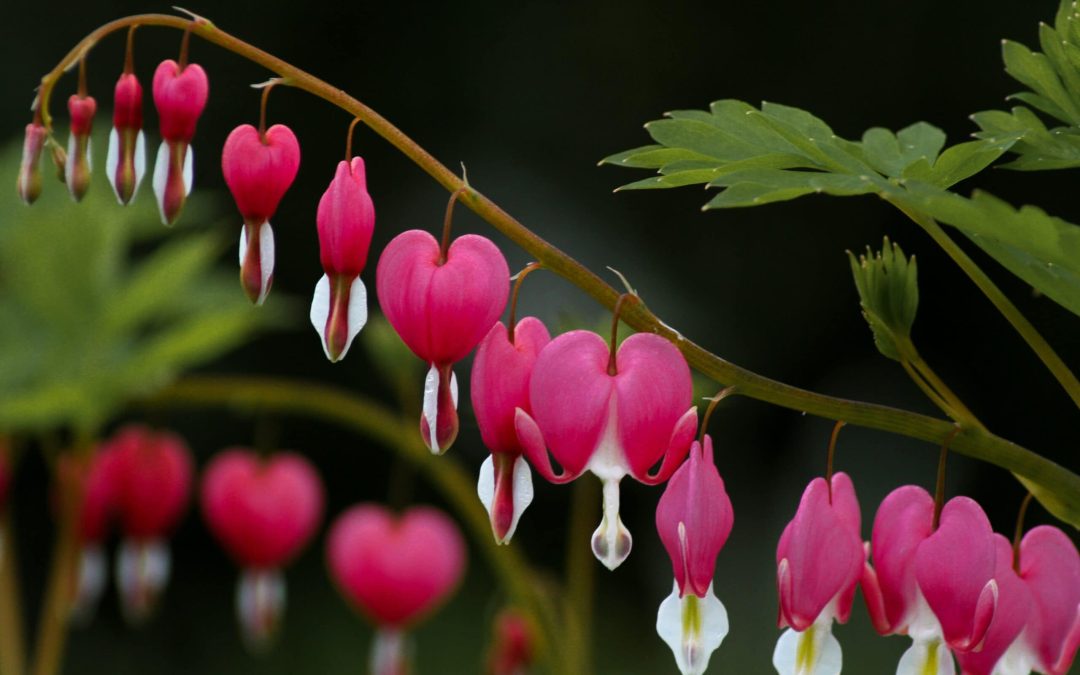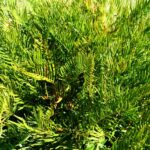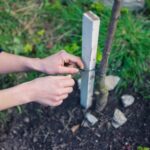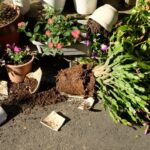The plant known scientifically as Lamprocapnos spectabilis or Dicentra spectabilis is also referred to as the common bleeding heart plant. You may think that the bleeding heart plant sounds like something that grows in a horror garden. It, however, is so named due to the shape of the flowering part of the bleeding heart. This beautiful plant features soft heart-shaped flowers that hang consecutively like small drops from the arching stems.
Some have referred to the bleeding heart plant as a lady’s locket, lady’s heart, and even the lyre flower. The flowers of the bleeding heart are usually a pink and white combination or sometimes solid white in color. Bleeding heart plant care is simple, as long as you first know the basics of this plant.
When the plant first begins to grow, the foliage can be identified as blue-green fringed leaves. Typically, bleeding heart plants prefer the shady wooded areas of an environment blooming beautifully for several weeks in the spring. An interesting fact about this plant is that it will become ephemeral and disappear for the rest of the summer if exposed to too much sun or heat.
As a perennial, the plant is not dead as the roots are still alive, and the bleeding heart plant will emerge again the following spring. Be sure to mark the area so as to not accidentally dig up or disturb your bleeding heart plant. It is also a good idea to keep your dormant plant watered in order to keep the roots hydrated.
How Do You Take Care Of A Bleeding Heart Plant?
Since the bleeding heart plant is relatively easy to grow, it was considered to be the finest hardy plant of the 19th century. Some during this time period would reference the bleeding heart plant to be as common as wallpaper since it seemed to become commonplace to see them growing everywhere. These plants have a preference for shade in many southern regions and do well when they are watered consistently.
In the north, a bleeding heart plant can survive and flourish in the full direct sun due in part to the cooler temperatures and moist soil. Watering a bleeding heart plant is extremely important. They should be given about an inch of water every week to retain their moist conditions. A bleeding heart plant may produce around twenty flowers on its stem during the spring.
These flowers need to be protected since they are quite delicate and can suffer damage during strong winds.
Where Is The Best Place To Plant A Bleeding Heart?
Bleeding heart plants prefer partial sun with shaded areas for optimal development. The best time to plant a bleeding heart plant is during the spring time right after the threat of frost has passed. When you decide to plant your bleeding heart, it is important to remember they prefer soil that is fertile, well-draining, and moist.
To increase the fertility of your soil, you may add compost or aged manure before planting. The bleeding heart requires moisture retention, which you can provide by adding mulch to the area you plant in.
The mulch will break down over time, providing the bleeding heart plant with extra nutrients. Mulch will also retain any moisture for the plant as well as keep any weeds from growing to compete with your bleeding heart.
Should I Cut Back My Bleeding Heart Plant?
You do not need to worry about pruning your bleeding heart plants since they are perennial, meaning they will return the following spring. If you do not deadhead or remove the dead flowers from your bleeding heart plant, it will begin to self-seed.
This process means your bleeding heart plant will begin to disperse its seeds wherever the wind takes it. The only upkeep required is to trim back the brown foliage of the bleeding heart when the leaves start to die off. You can also practice maintenance since the fringed leaves do become a bit ragged in appearance.
Simply trimming them back to their basal growth will allow new leaves to grow and bloom. If you are interested in propagating your bleeding heart plant, it is possible through the seeds, clump division, or even stem cuttings.
Is Bleeding Heart Poisonous?
Yes! Bleeding heart plants contain a substance known as isoquinoline alkaloids that can be very toxic to humans and animals. Typically humans do not consume such a plant due to its bright blooming flowers.
Most cases of poisoning are from horses and dogs as they are more likely to consume the plant. Small dogs are especially prone to having severe cases of poisoning due to their size. Toxins prevalent in the bleeding heart plant would cause liver damage and seizures if they were to be ingested in large quantities by a human.
It is best not to consume any part of the plant as some may develop mild skin irritation or a rash just from touching the bleeding heart alone.
Common Bleeding Heart Plant Problems
-
Pests
Typically, bleeding heart plants are quite hardy and trouble-free as they tend to grow very well in most shaded and moist areas. However, they can be susceptible to some garden pests such as aphids, scales, slugs, and snails. These pest problems can easily be treated with an insecticidal soap solution or even neem oil for a less invasive approach.
Bleeding heart plants are also susceptible to some diseases like fungal infections, powdery mildew, and leaf spot. The leaves of the bleeding heart plant may be treated with a fungicide found in most stores.
If your plant, however, turns black and begins to smell rotten, it must be removed before it can begin to affect other nearby plants. In the case of leaf spots, the best remedy is to trim back the affected areas, so it does not affect the rest of the plant.
The bleeding heart plant does prefer to inhabit moist soil but is not equipped to deal with heavy wet soil. If this does occur, your bleeding heart may develop a case of root rot since the roots are left in the wet for too long. Providing your bleeding heart plant with well-draining soil will help avoid any cases of root rot.
Bring Some Love Into Your Garden
Bleeding hearts are a beautiful addition to your garden or home. Keeping them in your space is a great way to add some magic into garden. Not only are they beautiful, but they’re unique and are a great way to set your plants out from the rest of your neighbors. Our Landscaping team can help you find the perfect spot for your bleeding hearts and other plants!






